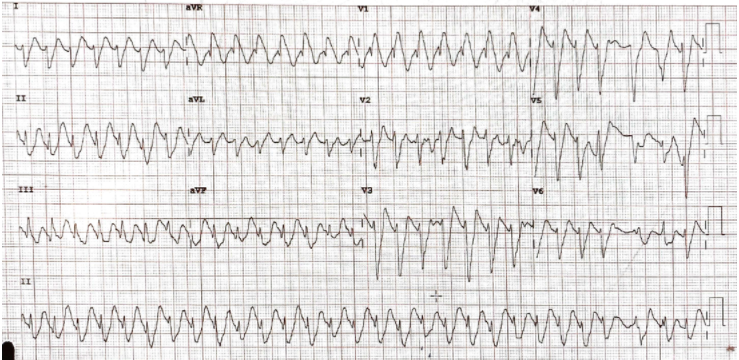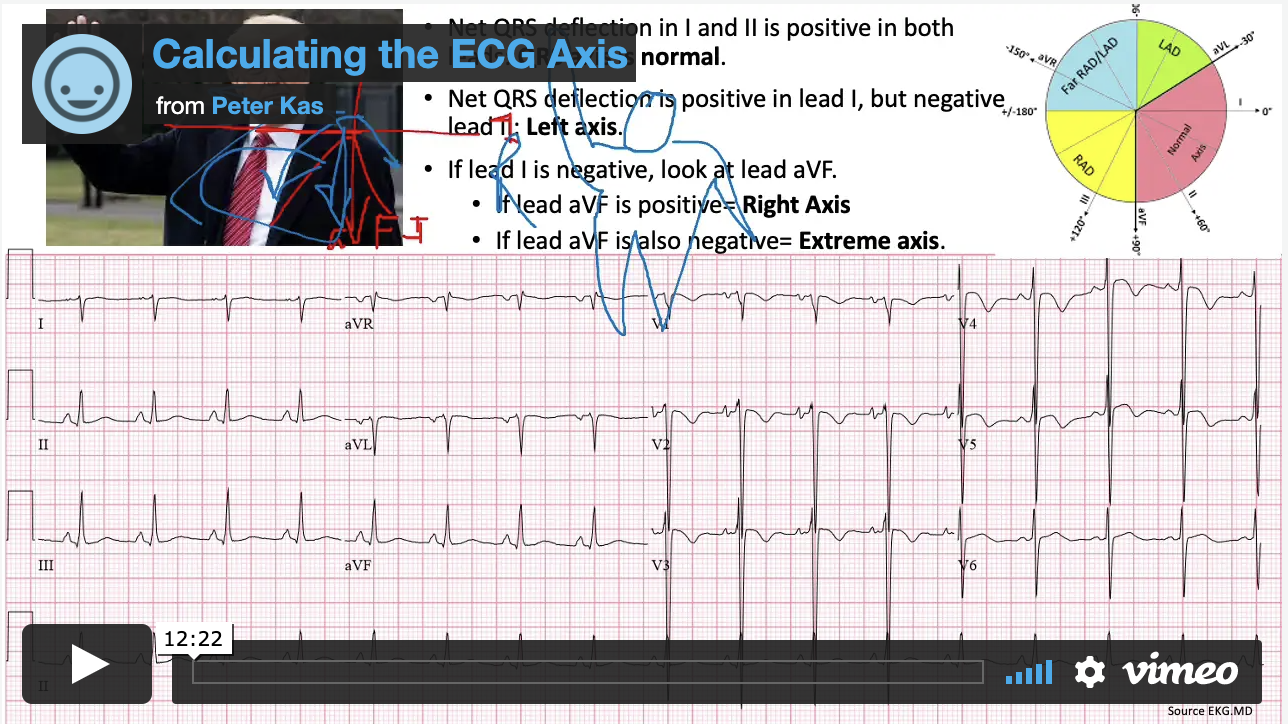However I have found it more useful than I thought.
In this Blog we will look at how to calculate axis and refer you back to the section in the course on ECG Axis to do this in more detail and we will further look at some of the uses.
There are many ways to calculate axis;
- the quadrant method,
- the 3 lead method,
- the degree method and more.
The difference is in the preciseness with which you wish to calculate the axis ie., are you happy to say it’s normal or it’s leftward, or do you need to know that this axis is not only rightward, but that it is 95 degrees.
His ECG is shown below. What is the diagnosis?
This was an incomplete triphasicular block, with:
- RBBB
- First degree block
- left axis ie LAFB
Read the section on fascicular blocks to find out more.
The next case is one of an amphetamine overdose. Can the axis help us here?
The patient has been in a sinus tachycardia and now he has a wide complex.
- Is it VT?
- Is it Na channel Blockade?
- Is it RBBB?
First thing to say is that amphetamines DO NOT cause Na channel blockade, so it can’t be that.
What is the axis? It looks like a right axis. Right axis can be cause by ventricular ectopy ie VT. So it can be VT.
RBBB doesn’t tend to cause a right axis. BUT HyperK+ does and this patient was hyperkalaemic. After being shocked with no result, the patient was treated with bicarb and Ca++ and sinus rhythm was obtained.
Axis can help.
HOW TO QUICKLY CALCULATE AXIS: Let’s use the Quadrant Method
We will use leads I and aVF
Here is how to perform this:
- Assign Lead I to your LEFT ARM
- Assign Lead aVF to your RIGHT ARM
Now look at the leads and raise the arm belonging to the positive lead and lower the arm belonging to the negative lead. The arm left upward will be the axis if Left or right.
Let’s practice on the ECG below:
Using the Quadrant Method the left arm goes up as lead I is positive and the right arm is downas aVF is negative. The resultant positive arm is the left so it is a LEFT AXIS.








